Sunflower is a type of flowering plant that belongs to the daisy family. It has large, bright yellow petals arranged around a central disc and grows on tall stalks reaching up to 8 feet in height. Sunflowers are native to the Americas but can now be found growing throughout the world. They thrive in sunny locations with moist soil and provide an abundance of seeds for food or planting. The vibrant yellow flowers also attract pollinators such as bees and butterflies, making them a popular choice for gardens and home landscapes.

Make sure you plant your seeds one inch deep into the ground, spaced at least 12 inches apart from each other, so they have enough room to spread out their roots and grow tall stalks.
©Retired Guy Photography/Shutterstock.com
1. Choose the Type of Sunflower
There are many different types of sunflowers. They come in a variety of sizes and colors. The most common type is the annual Helianthus annuus, which usually grows to be about 3-4 feet tall with large yellow or orange petals and a thick central stem. Other varieties may reach up to 12 feet tall!
The Dwarf Sunspot cultivar typically reaches heights between 1-2 feet tall, making it perfect for small gardens or containers. It has bright yellow petals with dark chocolate centers that attract bees and butterflies.
The Vanilla Ice variety produces creamy white petals surrounding its deep dark center disc – adding unique color to your garden beds!
The Lemon Queen is a popular heirloom variety boasting vibrant lemon-colored petals that contrast against its greyish-green foliage. This one will reach around 5-6 feet in height when mature.
No matter what size you prefer or the color you’re looking for – there’s sure to be a sunflower out there that suits your needs perfectly!
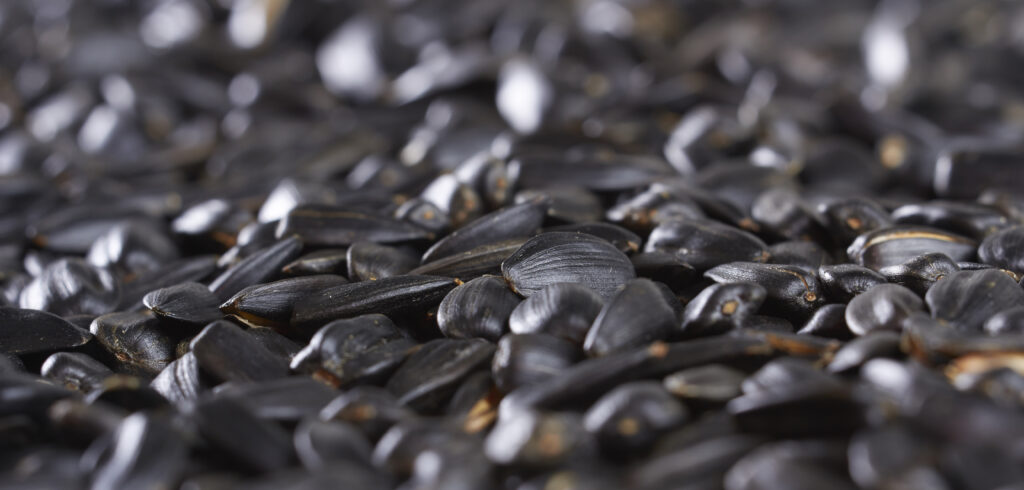
No matter what size you prefer or the color you’re looking for – there’s sure to be a sunflower out there that suits your needs perfectly!
©5,184 × 2,480 pixels, file size: 5.24 MB, MIME type: image/jpeg – License
2. Plan the Location
Sunflowers should be planted in a sunny location with well-draining soil. The sunflowers need at least 8 hours of direct sunlight each day in order to grow properly. They also require plenty of space, as their large flower heads can spread up to 2 feet wide!
When planting your sunflower seeds, you’ll want to make sure there are about 18 inches between each seedling, so they have enough room to grow and stretch out their stems. You can leave only 12 inches between the dwarf sunflower varieties. Soil should be loose enough for the roots to penetrate easily, and it needs to contain plenty of nutrients such as phosphorus and potassium. Compost or aged manure are great additions that will provide the plants with these necessary elements.
Lastly, don’t forget to water your sunflower seedlings regularly. They need approximately 1 inch of water every week until they reach maturity! With proper care and attention, you will soon have beautiful blooms decorating your garden!
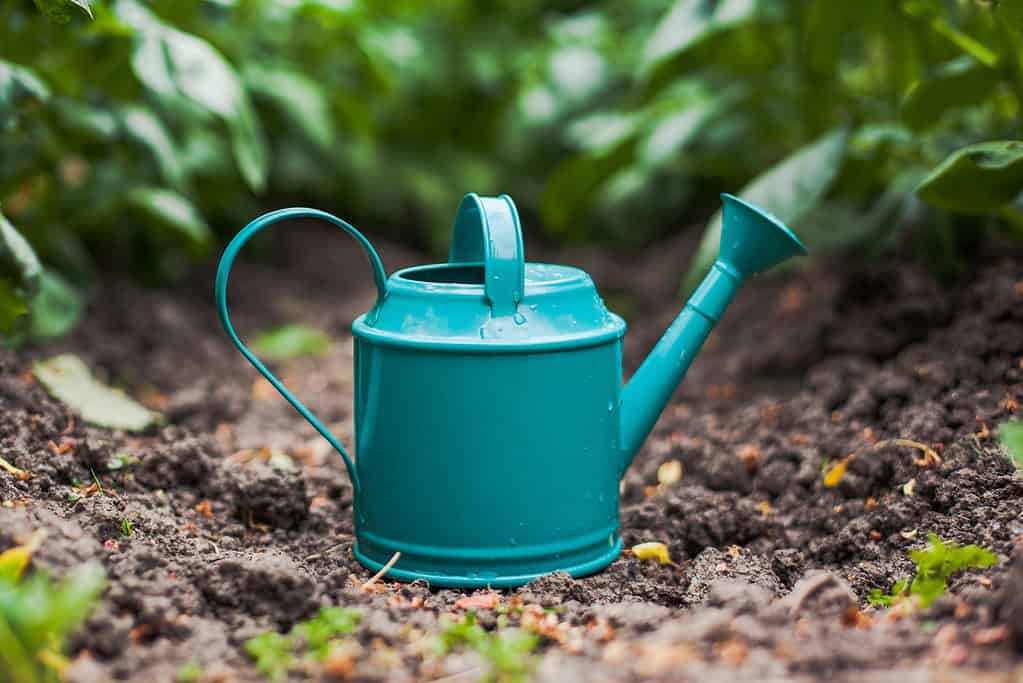
Don’t forget to water your sunflower seedlings regularly.
©iStock.com/Tgordievskaya
4. Gather Your Tools
Planting sunflower seeds is a great way to bring life and beauty to your garden. Before you start, make sure that you have all the necessary tools on hand. You will need soil amendments like compost or fertilizer, as well as a dowel or trowel for planting.
If the soil in your garden is hard-packed, then you may need to use a shovel or fork to loosen it up before planting. Gardening gloves are also essential. They will protect your hands from dirt and scratches while pulling out any weeds in the area where you plan on planting.
Lastly, don’t forget about having access to water! A watering can, or hose will come in handy when it comes time to water your plants each day after they sprout up from their freshly planted seedbeds. Of course, don’t forget to purchase some high-quality sunflower seeds before getting started! With these simple tools and supplies at hand, you’ll be ready for success with this rewarding gardening project soon enough!
Here are some supplies you might need:
- Gardening gloves
- Trowel, shovel, or gardening fork
- Bucket or wheelbarrow for weeds
- Watering can or hose
- Soil amendments like compost or fertilizer
- Sunflower seeds
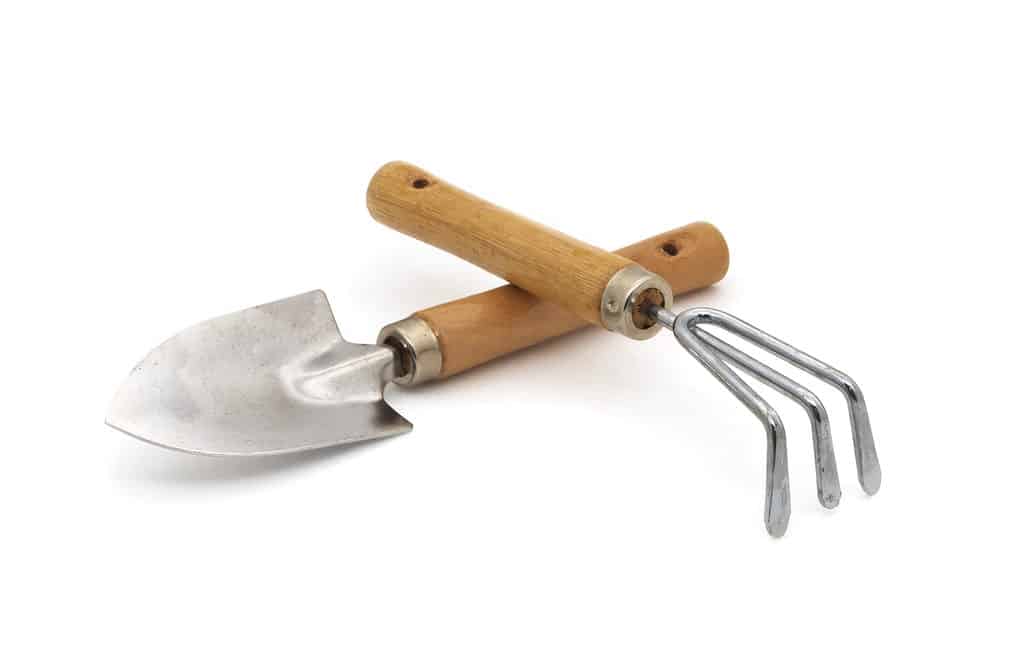
Before you start, make sure that you have all the necessary tools on hand.
©LubaShi/Shutterstock.com
5. Prepare the Soil
Now comes the fun part. It’s time to dig! Begin by turning over the top 8-10 inches of soil. You want to make sure you remove any weeds that may be in this layer, as sunflowers aren’t very effective at preventing them from growing. Take some extra time and effort when removing these weeds so your sunflower seedlings have a chance to grow.
If you are using any soil amendments, such as compost or fertilizer, now is the perfect time to mix them into your soil for maximum effect. Make sure you evenly distribute the amendments throughout your garden bed so every seedling will get its fair share of nutrients and minerals as it grows up tall and strong! If there are large chunks, break them down before planting seeds to ensure everything is properly dispersed in the dirt.
Once all of your amendments are mixed in with the earth and all stubborn weeds have been removed, you can go ahead and plant those beautiful sunflower seeds!
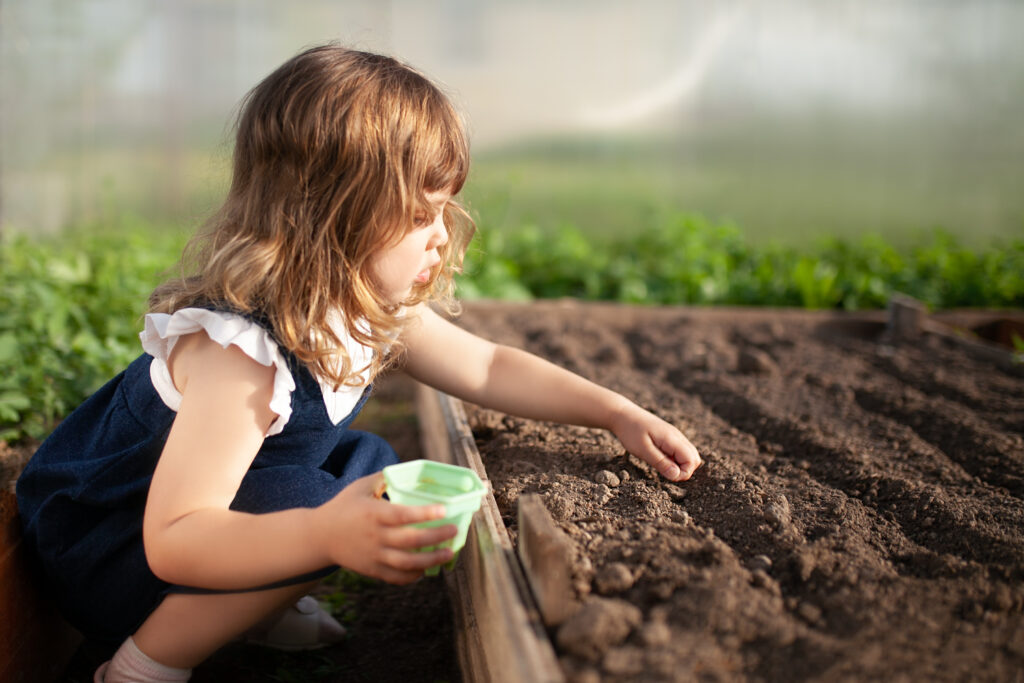
Planting sunflower seeds is a relatively easy task.
©Alina Demidenko/Shutterstock.com
6. Plant the Seeds
Planting sunflower seeds is a relatively easy task. Start by digging holes that are around one inch deep. Pat down the soil to make sure there are no air pockets, as this can interfere with germination.
Once planted, water your sunflower seeds generously and keep the soil moist for about 10-14 days – this is how long it takes for them to germinate. It’s important to keep in mind that the ideal temperature for germination should be between 55-60 degrees Fahrenheit. If you live in an area with colder weather, wait long enough in the spring for the soil to warm, or the seeds will not sprout. With these steps in mind, you should have healthy and happy sunflowers blooming in 80-120 days!
7. Weed, Mulch, and Stake
After your sunflower plants have grown to about a foot tall, it is essential that you take the time to check on them and pull any weeds. Weeds can be difficult for sunflowers to suppress because of their shallow roots (only 4 inches deep), so making sure no weed competition exists is key for optimal growth. Once all the weeds are removed, water once more and then apply a thick layer of mulch around each plant. Mulching helps retain moisture in the soil as well as keep down weeds.
If there are high winds in your area or if you’re planning on planting taller varieties of sunflowers, consider staking them. Stakes help support the long stems from being blown over by strong gusts of wind. Since they have a root system that is only around four inches deep, they topple over pretty easily. You’ll want something sturdy like metal stakes that are driven into the ground close enough together, so they provide adequate support for your plants’ needs yet far away enough from one another so as not to injure root systems when pounded into place with a hammer or mallet tool. Wooden posts also work just fine too!
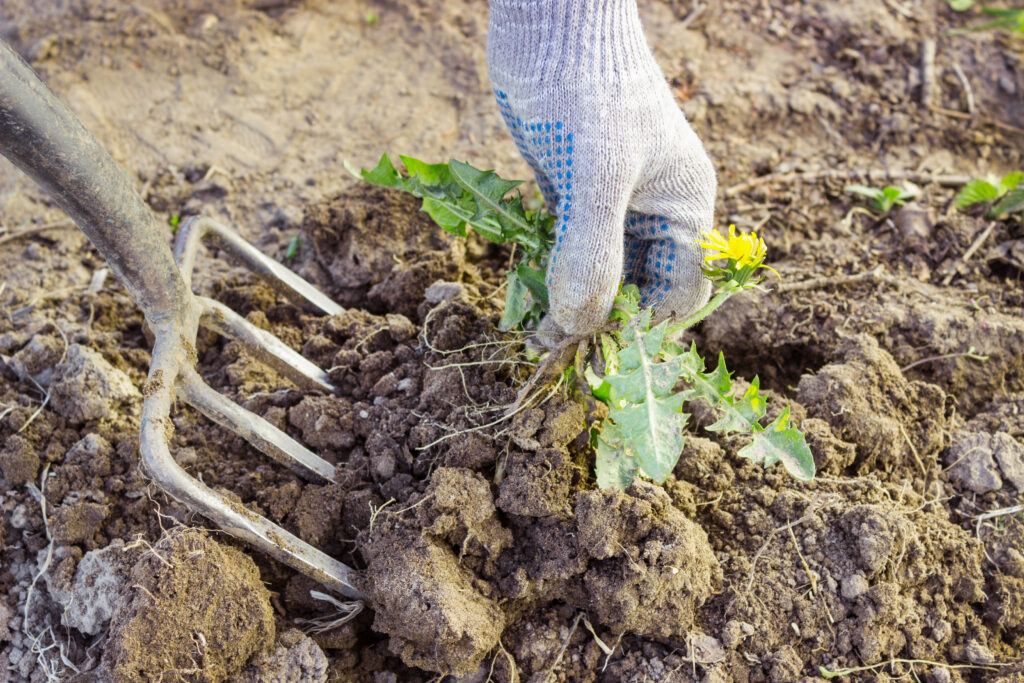
Weeds can be difficult for sunflowers to suppress because of their shallow roots (only 4 inches deep), so making sure no weed competition exists is key for optimal growth.
©Sever180/Shutterstock.com
Summary of the 6 Steps to Planting Sunflower Seeds
- Choose the type of sunflower seeds. There are many sizes and colors.
- Plant the location. Sunflowers need six hours of sunlight per day.
- Gather your tools to weed, amend, plant, and water.
- Prepare the soil. Pull weeds, add fertilizer, and loosen the soil.
- Plant the seeds. They only need to be one inch below the soil and then watered.
- Weed, mulch, and stake the plants after they are 12 inches tall.
The photo featured at the top of this post is © iStock.com/oleshkonti
Thank you for reading! Have some feedback for us? Contact the AZ Animals editorial team.






